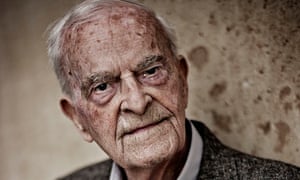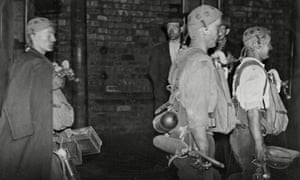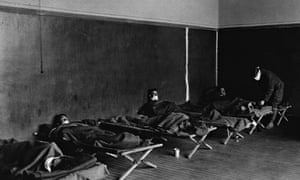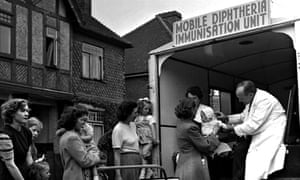https://www.theatlantic.com/magazine/archive/2014/11/doctors-tell-all-and-its-bad/380785/
for someone in her 30s, I’ve spent a lot of time in doctors’ offices and hospitals, shivering on exam tables in my open-to-the-front gown, recording my medical history on multiple forms, having enough blood drawn in little glass tubes to satisfy a thirsty vampire. In my early 20s, I contracted a disease that doctors were unable to identify for years—in fact, for about a decade they thought nothing was wrong with me—but that nonetheless led to multiple complications, requiring a succession of surgeries, emergency-room visits, and ultimately (when tests finally showed something was wrong) trips to specialists for MRIs and lots more testing. During the time I was ill and undiagnosed, I was also in and out of the hospital with my mother, who was being treated for metastatic cancer and was admitted twice in her final weeks.
As a patient and the daughter of a patient, I was amazed by how precise surgery had become and how fast healing could be. I was struck, too, by how kind many of the nurses were; how smart and involved some of the doctors we met were. But I was also startled by the profound discomfort I always felt in hospitals. Physicians at times were brusque and even hostile to us (or was I imagining it?). The lighting was harsh, the food terrible, the rooms loud. Weren’t people trying to heal? That didn’t matter. What mattered was the whole busy apparatus of care—the beeping monitors and the hourly check-ins and the forced wakings, the elaborate (and frequently futile) interventions painstakingly performed on the terminally ill. In the hospital, I always felt like Alice at the Mad Hatter’s tea party: I had woken up in a world that seemed utterly logical to its inhabitants, but quite mad to me.
In my own case, it took doctors a long time (roughly 15 years) to recognize exactly what was wrong with me. Along the way, my blood work was at times a little off, or my inflammation markers and white-blood-cell counts were slightly elevated, but nothing seemed definitive, other than some persistent anemia. “Everything’s probably okay,” the doctors would say, or “You have an idiopathic problem,” which is doctor-talk for “We don’t know why you suddenly have hives every day.” They never implied that I was crazy, or seeking attention, or any of the other things you sometimes hear from patients (especially female ones) who have sought a diagnosis for years on end. At the same time, they didn’t believe anything was wrong enough to pursue; frequently they asked whether I was depressed before even doing a physical exam.
To them, I was a relatively fit, often high-functioning young woman who had a long list of “small” complaints that only occasionally swelled into an acute problem, for which a quick surgical fix was offered (but no reflection on what might be causing it). To me, my life was slowly dissolving into near-constant discomfort and sometimes frightening pain—and terror at losing control. I didn’t know how to speak to the doctors with the words that would get them, as I thought of it, “on my side.” I steeled myself before appointments, vowing not to leave until I had some answers—yet I never managed to ask even half my questions. “You’re fine. We can’t find anything wrong,” more than one doctor said. Or, unforgettably, “You’re probably just tired from having your period.”
In fact, something was very wrong. In the spring of 2012, a sympathetic doctor figured out that I had an autoimmune disease no one had tested me for. And then, one crisp fall afternoon last year, I learned that I had Lyme disease. (I had been bitten by multiple ticks in my adolescence, a few years before I started having symptoms, but no one had ever before thought to test me thoroughly for Lyme.) Until then, facing my doctors, I had simply thought, What can I say? Perhaps they’re right. They’re the doctors, after all.
but this essay isn’t about how I was right and my doctors were wrong. It’s about why it has become so difficult for so many doctors and patients to communicate with each other. Ours is a technologically proficient but emotionally deficient and inconsistent medical system that is best at treating acute, not chronic, problems: for every instance of expert treatment, skilled surgery, or innovative problem-solving, there are countless cases of substandard care, overlooked diagnoses, bureaucratic bungling, and even outright antagonism between doctor and patient. For a system that invokes “patient-centered care” as a mantra, modern medicine is startlingly inattentive—at times actively indifferent—to patients’ needs.
To my surprise, I’ve now learned that patients aren’t alone in feeling that doctors are failing them. Behind the scenes, many doctors feel the same way. And now some of them are telling their side of the story. A recent crop of books offers a fascinating and disturbing ethnography of the opaque land of medicine, told by participant-observers wearing lab coats. What’s going on is more dysfunctional than I imagined in my worst moments. Although we’re all aware of pervasive health-care problems and the coming shortage of general practitioners, few of us have a clear idea of how truly disillusioned many doctors are with a system that has shifted profoundly over the past four decades. These inside accounts should be compulsory reading for doctors, patients, and legislators alike. They reveal a crisis rooted not just in rising costs but in the very meaning and structure of care. Even the most frustrated patient will come away with respect for how difficult doctors’ work is. She may also emerge, as I did, pledging (in vain) that she will never again go to a doctor or a hospital.
spend a day in an emergency room, and chances are you’ll be struck by two things: the organizational chaos and the emotional detachment as nurses, doctors, and administrators bustle in and out, barely registering the human distress it is their job to address. The same could be said of our oddly bloodless debates about the future of health care. The rhetoric of medical reform draws mostly on economics: Experts differ over, among other things, how to structure “insurance mandates” and what constitutes “overutilization” of a rapidly expanding array of high-tech procedures and diagnostic tests. They argue about why “the United States health care system is the most expensive in the world,” as a 2014 Commonwealth Fund report finds, yet consistently “underperforms relative to other countries on most dimensions of performance.” (Currently, according to that report, the U.S. ranks last among 11 major industrialized nations in efficiency, equity, and “healthy lives,” meaning health outcomes attributable to medical care.)
But the actual experience for patients and doctors of navigating offices, clinics, hospitals—and each other’s company—rarely enters the discussion. Nor is there any effort to focus on the deeper reality of disease, as Atul Gawande, a surgeon and professor at Harvard Medical School, writes in his astute new exploration of geriatric medicine, Being Mortal. This absence matters, because how patients feel about their medical interactions really does influence the efficacy of the care they receive, and doctors’ emotions about their work in turn influence the quality of the care they provide. Despite our virtuosic surgical capacities, our cutting-edge technology, and our pharmaceutical advances, the patient-doctor relationship is still the heart of medicine. And it has eroded terribly. Terrence Holt, a geriatric specialist at the University of North Carolina at Chapel Hill, describes the situation in Internal Medicine, fictional fables based on his residency:
Any patient in a hospital, when we take their clothes away and lay them in a bed, starts to lose identity; after a few days, they all start to merge into a single passive body, distinguishable … only by the illnesses that brought them there.
The subjective experience of illness has always been all but impossible to convey. But systemic changes have intensified a disconnect between patients and doctors that was less glaring some 40 years ago, before technological advances and corporatization began to transform the comparatively low-tech, localized postwar medical system. The broad contours of the situation are familiar. Health care in the United States operates predominantly on a fee-for-service basis, which rewards doctors for doing as much as possible, rather than for offering the best care possible. This didn’t matter much in the 1950s, when a general practitioner coordinated most of your care and not many treatment options existed. But sophisticated new surgical techniques, and tools like the CT scan and the MRI, led to a surge in high-tech specialization. Rising costs in the 1970s were the catalyst for “managed care”—basically, our current system, in which insurance companies like Aetna and United Healthcare negotiate with networks of doctors to determine how much care patients get, whom we can see, and at what price. But along with new checks and balances came added bureaucracy, and frustrated doctors and patients. Comprehensive oversight has never been in shorter supply, as specialized “consults” proliferate and no one gets paid to coordinate care (problems the Affordable Care Act aims to fix).
In doctored: The Disillusionment of an American Physician, Sandeep Jauhar—a cardiologist who previously cast a cold eye on his medical apprenticeship in Intern—diagnoses a midlife crisis, not just in his own career but in the medical profession. Today’s physicians, he tells us, see themselves not as the “pillars of any community” but as “technicians on an assembly line,” or “pawn[s] in a money-making game for hospital administrators.” According to a 2012 survey, nearly eight out of 10 physicians are “somewhat pessimistic or very pessimistic about the future of the medical profession.” In 1973, 85 percent of physicians said they had no doubts about their career choice. In 2008, only 6 percent “described their morale as positive,” Jauhar reports. Doctors today are more likely to kill themselves than are members of any other professional group.
The demoralized insiders-turned-authors are blunt about their daily reality. The biggest problem is time: the system ensures that doctors don’t have enough of it. To rein in costs, insurance companies have set fees lower and lower. And because doctors tend to get reimbursed at higher rates when they are in a network (hospitals and large physician groups have more leverage with insurance companies), many work for groups that require them to cram in a set number of patients a day. Hence the eight-minute appointments we’re all familiar with. Paperwork compounds the time crunch. Studies estimate that today’s doctors and “hospitalists”—medical practitioners who do most of their work in hospitals—spend just 12 to 17 percent of their day with patients. The rest of the time is devoted to processing forms, reviewing lab results, maintaining electronic medical records, dealing with other staff. Physicians in non-hospital medical practices in the U.S. “spend ten times as many hours on nonclinical administrative duties” as their Canadian counterparts do, Danielle Ofri, an internist at New York’s Bellevue Hospital, reports in What Doctors Feel.
So doctors are busy, busy, busy—which spells trouble. Jauhar cites a prominent doctor’s adage that “One cannot do anything in medicine well on the fly,” and Ofri agrees. Overseeing 40-some patients, “I was practicing substandard medicine, and I knew it,” she writes. Jauhar notes that many doctors, working at “hyperspeed,” are so uncertain that they call in specialists just to “cover their ass”—hardly a cost-saving strategy. Lacking the time to take thorough histories or apply diagnostic skills, they order tests not because they’ve carefully considered alternative approaches but to protect themselves from malpractice suits and their patients from the poor care they’re offering them. (And, of course, tests are often lucrative for hospitals.)
There is also a more perverse upshot: stressed doctors take their frustrations out directly on patients. “I realize that in many ways I have become the kind of doctor I never thought I’d be,” Jauhar writes: “impatient, occasionally indifferent, at times dismissive or paternalistic.” (He also comes clean about a time when, struggling to live in New York City on his salary, he packed an already frenetic schedule with dubious moonlighting jobs—at a pharmaceutical company that flacked a questionable drug and with a cynical cardiologist who was bilking the system—which only further sapped his morale.) In The Good Doctor: A Father, a Son, and the Evolution of Medical Ethics, Barron H. Lerner, a bioethicist as well as a doctor, recalls admitting in the journal he kept during medical school, “I was angry at my patients.” In The Doctor Crisis, co-written with Charles Kenney, Jack Cochran, a plastic surgeon who worked his way up to executive director of the Permanente Federation, describes touring many clinics where he found “physician after physician” who was “deeply unhappy and often angry.” At times the hostility is barely repressed. Terrence Holt overhears an intern call her patient a “whiner.” Routinely, these writers witness physicians joking that Latina/Latino patients suffer from “Hispanic Hysterical Syndrome” or referring to obese patients as “beached whales.”
The alarming part is how fast doctors’ empathy wanes. Studies show that it plunges in the third year of medical school; that’s exactly when initially eager and idealistic students start seeing patients on rotation. The problem, Danielle Ofri writes, isn’t some elemental Hobbesian lack of sympathy; students (like the doctors they will become) are overworked and overtired, and they realize that there is too much work to be done in too little time. And because the medical-education system largely ignores the emotional side of health care, as Ofri emphasizes, doctors end up distancing themselves unthinkingly from what they are seeing. One of her anecdotes suggests what they’re up against: an intern, handed a dying baby whose parents don’t want to see her, is curtly told to note the infant’s time of death; with no empty room in sight, the doctor slips into a supply closet, torn between keeping an eye on her watch and soothing the baby. “It’s no wonder that empathy gets trounced in the actual world of clinical medicine,” Ofri concludes; empathy gets in the way of what doctors need to survive.
Yet empathy is anything but a frill: not only is it crucial to doctors’ humanity and patients’ dignity, it can be key to medical efficacy. The rate of severe diabetes complications in patients of doctors who rate high on a standard empathy scale, Ofri notes, is a remarkable 40 percent lower than in patients with low-empathy doctors. “This is comparable,” she points out, “to the benefits seen with the most intensive medical therapy for diabetes.”
you may be wondering why the rise of patients’ rights in the 1970s and ’80s, hailed as a revolutionary advance in health care, hasn’t served us better. After all, empowered by both the law and the Internet, we are far more conversant with our medical options—and with the history of medical hubris—than our grandparents were. Yet the legal recalibration of power has unintentionally contributed to the uneasy standoff between doctors and patients, as Barron Lerner observes in The Good Doctor. Lerner and his father, whom he followed into medicine, both staked their careers on the belief that the patient comes first. Their experience of medicine and their ideas about patient care, though, are starkly different. The elder Lerner practiced in an era when doctors unilaterally decided the treatment and often lied to patients about their prognoses. (Knowing you were dying was considered unhealthy.) At its most egregious extreme, medical paternalism led to unnecessary surgeries (among them, disfiguring radical mastectomies) and unethical research on unknowing subjects, as in the Tuskegee syphilis experiment.
Today, in the younger Lerner’s era, patient and doctor theoretically have a more collaborative relationship, based on informed consent. We take for granted that doctors will tell us our diagnosis and proceed according to carefully delineated protocols. This is a real advance, yet it is only part of the story. As Lerner comes to see, some of the overtreatment routinely found in hospitals is actually an outgrowth of the patients’-rights movement. In the past, when patients’ hearts stopped, or the terminally ill succumbed to infection, doctors typically would let them go. In our era of “defensive medicine,” unless you have signed a “do not resuscitate” order (and sometimes even if you have, but your family insists on treatment), you’ll be intubated, or defibrillated, or given antibiotics—on the off chance that last-ditch rescue is what you would want. And no doctor is likely to clarify the odds: roughly 15 in 100 cardiopulmonary resuscitations, for example, result in the patient living long enough to be discharged from the hospital.
But there is a deeper issue here, a collision of unarticulated needs and fears. Doctors have seen their power eroded—by insurance companies, by national treatment guidelines, by hospital bureaucracy—and now they have to deal with patients who feel newly empowered. Patients, meanwhile, want both clout and comfort; they feel both defiant and dependent. And so each side exercises power passively (or passive-aggressively), and maybe even unconsciously: I’ll listen to you, but I won’t really believe or act on what you say. All of which is a reminder that even with the rise of the malpractice threat, physicians and institutions continue to wield extensive medical power, just in subtler ways. I’ve heard many stories of hospitalized patients in pain yet worried that asking for more Dilaudid will be construed as entitled meddling.
To be sure, deciding who has the ultimate authority is a challenge: the patient, unlike the customer, can’t always be right, though few of us want to hear that. How far should doctors go to look for an illness they can’t initially find? To what degree should they privilege patients’ wishes for specific interventions? Satisfying answers to these questions have yet to be found. But the current balance of power is flawed. Each time I had surgery, I had to push for what seemed like a basic right—having a family member with me as I came to. I still remember trying to tell a nurse, my brain blurred by a waning anesthetic, that research proved the pain-reducing benefits of holding a loved one’s hand. A study, I figured, would carry more force than my need.
without being fully aware of it, what I really wanted all along was a doctor trained in a different system, who understood that a conversation was as important as a prescription; a doctor to whom healing mattered as much as state-of-the-art surgery did. What I was looking for, it turns out, was a doctor like Victoria Sweet, and the kind of care offered in, of all places, a charity hospital in San Francisco. A doctor who is able to slow down, aware of the dividends not just for patients but for herself and for the system: this is the sort of doctor Sweet discovered she could be in “the last almshouse in America,” as she calls Laguna Honda Hospital, a funky old facility for the destitute and chronically ill, where swallows flew through open turrets and 1,200 patients lay mostly in old-fashioned “open wards,” and where she worked for 20-some years. In her remarkable memoir, God’s Hotel, Sweet—who is also a historian of medicine versed in the medical work of the 12th-century nun Hildegard of Bingen—calls her radical solution for our sped-up health care “slow medicine.” Here is a doctor saying what patients intuitively know: being sick is draining, healing takes time, and strong medicine often has strong side effects.
Granted a capacious amount of time and freedom with her severely ill patients (many of them drug addicts, schizophrenics, or elderly and with few resources), Sweet is able to make diagnoses that her patients’ previous doctors missed. Relying on close observation to help her understand what’s really going on, she weans them from an average of 20 medications to six or seven. She finds that discarded medical practices—for example, manipulating the lymphatic system with an old-fashioned medical girdle—may have more to offer than contemporary interventions do. In one heartbreaking case, she realizes that an elderly patient is not suffering from Alzheimer’s following a hip surgery, as doctors at the woman’s former hospital concluded—a diagnosis that led to antipsychotic medicines, her removal from her own home, and her separation from her mentally disabled daughter. Rather, she is in pain: the hip had slid out of place, and no one responsible for her follow-up care had noticed.
Laguna Honda—where meals were served in sunlit rooms, and gardening and good company allowed hopeless cases to make seemingly miraculous recoveries—seems out of another era. Indeed, in 2010, after years of construction and renovations, it became a “modern” facility. But “slow medicine,” as Sweet trenchantly argues, isn’t an outmoded, soulful indulgence. It might actually be a form of efficiency: more-accurate diagnoses and effective low-tech treatments help the system save money, and result in fewer malpractice suits.
Atul Gawande suggests much the same thing in Being Mortal, arguing that fast, solution-oriented care—particularly in the last year of life, which accounts for an estimated one-quarter of Medicare expenditures—has, in missing the broader picture, led to a great deal of “callousness, inhumanity, and extraordinary suffering.” In The Doctor Crisis, which issues a biting call for a physician-led revolution in medicine, Jack Cochran, too, appreciates a core tenet of the slow-medicine spirit: fulfilled doctors make for more-satisfied patients. Tackling the problems of Kaiser Permanente’s Colorado medical group, he took the counterintuitive step of demoting “patient-centered care” as a goal, and elevated “preservation and enhancement of career” for doctors to first place. He restored to them the sense that their work is, as Barron Lerner’s old-fashioned father put it, a “rare privilege” to be pursued with a sense of responsibility, rather than harried accountability.
Medicine today values intervention far more than it values care. Gawande writes that for a clinician, “nothing is more threatening to who you think you are than a patient with a problem you cannot solve.” The result is that all too often, “medicine fails the people it is supposed to help.” The old doctor-knows-best ethos was profoundly flawed. But it was rooted in an ethic of care for the whole person, perhaps because physicians, less pressed for time, knew their patients better. Danielle Ofri notes that it was the paternalistic old doctors, still hanging around her medical school wearing “starched shirts [and] conservative ties,” who taught her the art of respecting her patients’ individuality: “For them, approaching the bedside of a patient was a sacred act.” One day she had a class with an intimidating cardiothoracic surgeon. To her surprise, he was as tender toward his wards as he was gruff toward his students, who, he insisted, should always seat themselves at the level of the patient or lower. “They are the ones who are sick,” he emphasized, “and they are the ones running this interview, not you.”
In the course of our lives, most of us will urgently need care, sometimes when we least expect it. Currently, we must seek it in a system that excels at stripping our medical shepherds of their humanity, leaving them shells of the doctors (and people) they want to be, and us alone in the sterile rooms they manage. What makes our predicament so puzzling, and what may offer hope, is that nearly all of us want a different outcome. I used to think that change was necessary for the patient’s sake. Now I see that it’s necessary for the doctor’s sake, too.





